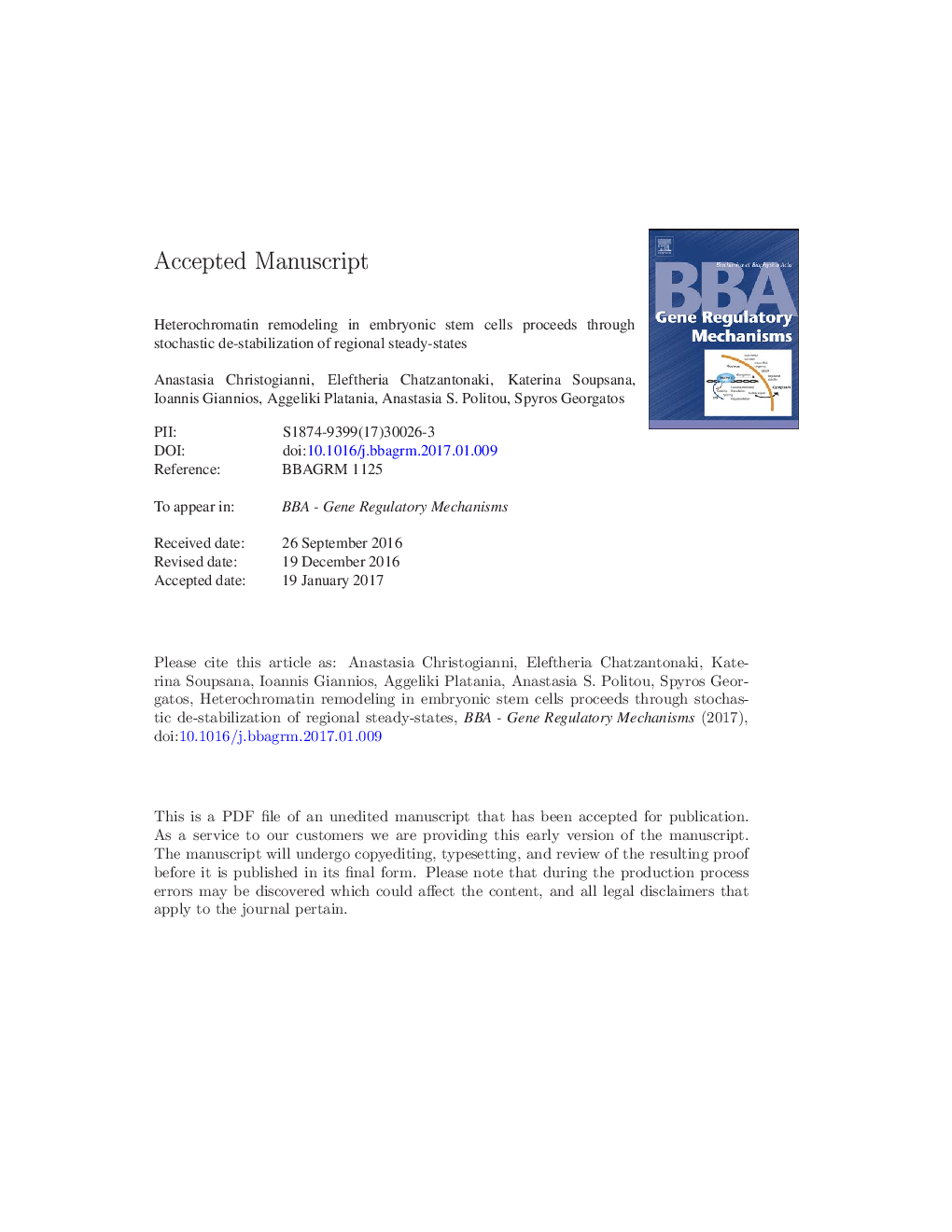| Article ID | Journal | Published Year | Pages | File Type |
|---|---|---|---|---|
| 5507783 | Biochimica et Biophysica Acta (BBA) - Gene Regulatory Mechanisms | 2017 | 44 Pages |
Abstract
Cell differentiation is associated with progressive immobilization of chromatin proteins, expansion of heterochromatin, decrease of global transcriptional activity and induction of lineage-specific genes. However, how these processes relate to one another remains unknown. We show here that the heterochromatic domains of mouse embryonic stem cells (ESCs) are dynamically distinct and possesses a mosaic sub-structure. Although random spatio-temporal fluctuations reshuffle continuously the chromatin landscape, each heterochromatic territory maintains its dynamic profile, exhibiting robustness and resembling a quasi-steady state. Transitions towards less dynamic states are detected sporadically as ESCs downregulate Nanog and exit the self-renewal phase. These transitions increase in frequency after lineage-commitment, but evolve differently depending on cellular context and transcriptional status. We propose that chromatin remodeling is a step-wise process, which involves stochastic de-stabilization of regional steady states and formation of new dynamic ensembles in coordination to changes in the gene expression program.
Related Topics
Life Sciences
Biochemistry, Genetics and Molecular Biology
Biochemistry
Authors
Anastasia Christogianni, Eleftheria Chatzantonaki, Katerina Soupsana, Ioannis Giannios, Aggeliki Platania, Anastasia S. Politou, Spyros Georgatos,
